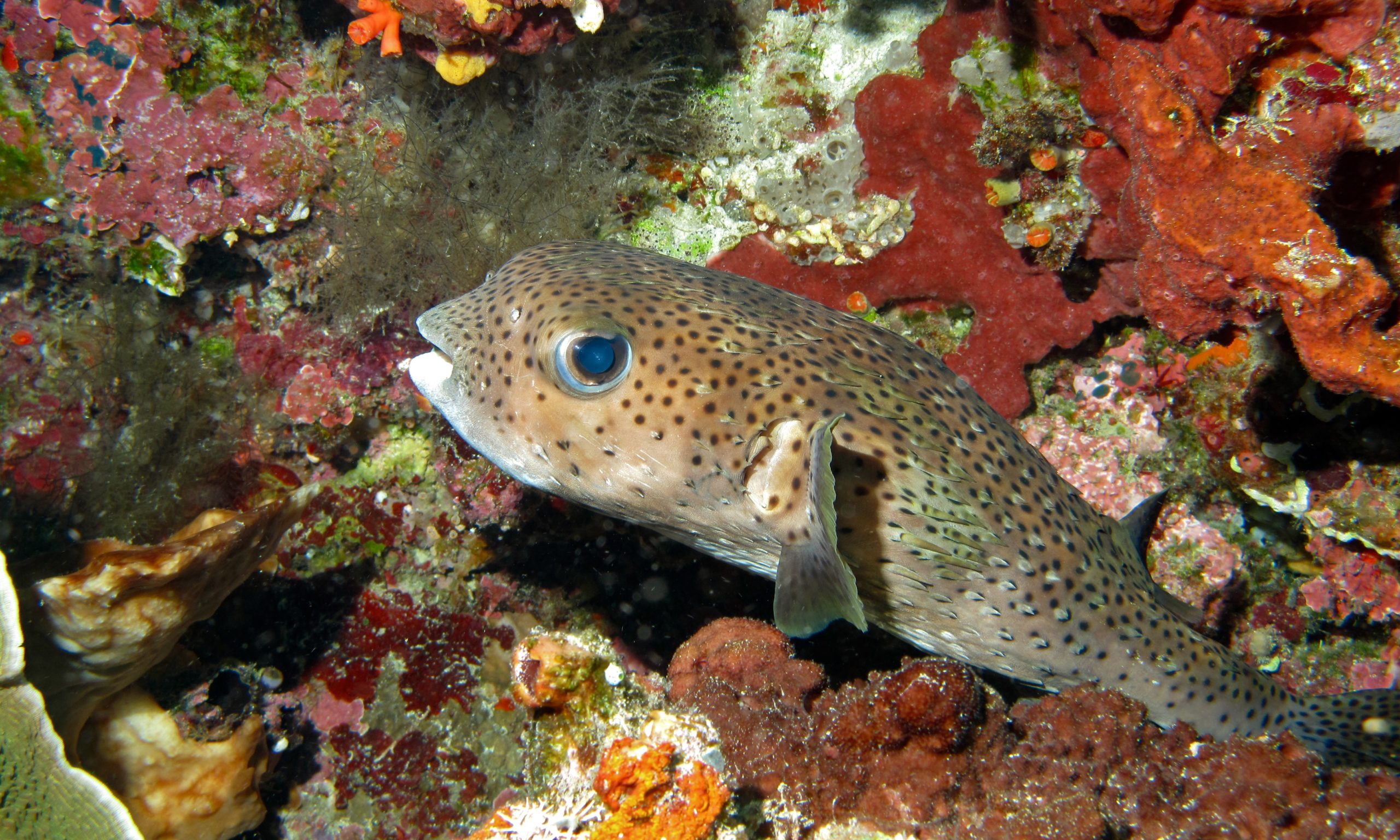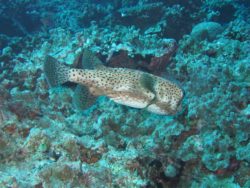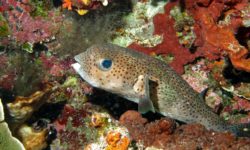
Sea Wonder: Spotted Porcupinefish
The spotted porcupinefish (Diodon hystrix) has a few nicknames, including spot-fin porcupinefish, black-spotted porcupinefish, or simply, porcupinefish. As these names suggest, this bony fish has spots on its body and fins and spines that resemble those of a porcupine. There are 17 known species of porcupinefish in the world’s ocean including the long-spine porcupinefish.
Description
The spotted porcupinefish is commonly mistaken for the nearly identical pufferfish. While these fish are related, they belong to different evolutionary families. Pufferfish are from the family Tetraodontidae while porcupinefish are from the family Diodontidae. The main difference between the two is the presence of spines (which are really specialized scales) that present themselves when the porcupinefish puffs up in the face of a threat. Pufferfish do not have these spines.
Other porcupinefish characteristics include an elongated body with a rounded head, large, round eyes, and a large mouth that is usually left open. These fish can reach lengths of nearly three feet but are more often about a foot-and-a-half when fully grown. Their bodies are a sandy-yellow color and are marbled all over with black spots. They have pectoral, anal, and dorsal fins, but lack pelvic fins. Their spines lay flat on their bodies when they are deflated.
Diet & Habitat

A spotted porcupinefish (Diodon hystrix), also known as the spotted porcupinefish, seen off of the Philippine Islands near Apo Reef. Photo: Dr. Dwayne Meadows/NOAA/NMFS/OPR
Spotted porcupinefish are nocturnal hunters that eat crustaceans and mollusks. They have a single tooth that forms a plate-like beak that is powerful enough to crush the hard shells of their prey. As they crush their prey, they swallow pieces of it whole, shell fragments and all. To deter predators of their own, they inhale water, expand their bodies, and flare up their spines. They also produce a toxin that deters any would-be predators.
Spotted porcupinefish are found in tropical and subtropical seas around the world. In the Pacific Ocean we see them from San Diego down to Chile, and in the Atlantic we see them from Massachusetts down into the Gulf of Mexico and along northern Brazil. This species is the only one to live in the Mediterranean Sea. In the National Marine Sanctuary System, we might find them in Hawaiian Islands Humpback Whale, Florida Keys, Flower Garden Banks, and all of the West Coast sanctuaries. They tend to live along coral reefs, underwater caves, or other rocky areas that offer shelter.
Life History
Spotted porcupinefish usually live alone and are quite skittish, however multiple individuals can be found living near each other in areas where food is abundant. When a male spotted porcupinefish encounters a female, they may try to reproduce. Males push females towards the water’s surface where both individuals release gametes into the water. The reproductive cells fuse, and the fertilized eggs float along for only a few days before hatching. Hatchlings live in the deeper open ocean until they reach their juvenile life stage and achieve a length of approximately 8 inches, or about half-grown. Once they reach this size, they move to shallower waters where they remain for the rest of their lives.
Threats & Conservation
Spotted porcupinefish are not commercially fished because of their poisonous flesh, but they are caught for the aquarium trade. They aren’t strong swimmers and are easily caught. In some parts of the world, porcupinefish are eaten in very small portions, but this is quite rare. The species is not listed on the International Union for Conservation of Nature (IUCN) Red List or on the list of threatened or endangered species in the U.S. Potential threats to the species include climate change and ocean acidification, pollution, bycatch, and habitat loss.

Porcupinefish (Diodon hystrix) seen off of St. Croix. Photo: NOAA CCMA Biogeography Team

